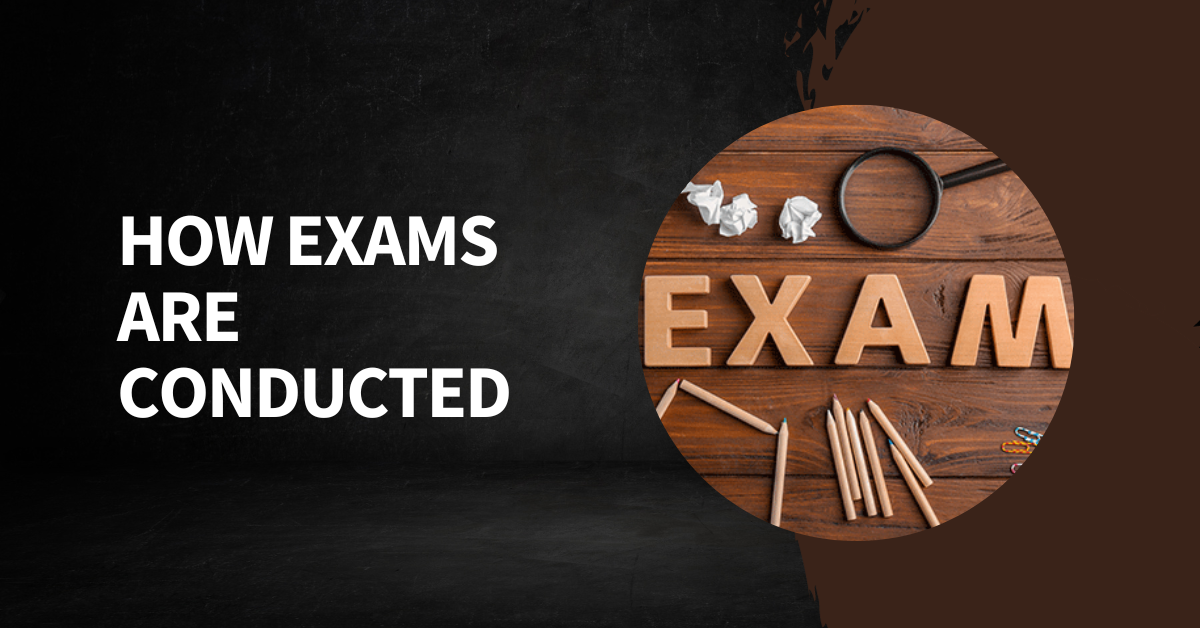
Examinations are a fundamental part of the education system worldwide. They serve as a means to evaluate students’ knowledge, comprehension, and application of the subjects they have studied. But have you ever wondered how exams are conducted? In this comprehensive exploration, we will unveil the intricate process behind the administration of examinations, from setting questions to delivering results. Let’s dive into the world of exam conductance.
The Prelude: Designing the Exam
Before the exam day arrives, there is a meticulous process that takes place behind the scenes. This process starts with the creation of the exam itself. Experienced educators and subject matter experts come together to draft questions that align with the learning objectives and curriculum.
Setting the Questions
Question setting is an art. It requires crafting questions that are clear, concise, and assess the knowledge and skills that students are expected to have acquired during their course of study. Questions must also be fair and unbiased, ensuring that no particular group of students is disadvantaged.
Quality Assurance
To maintain the integrity of the exam, a rigorous quality assurance process is followed. This involves multiple rounds of review and validation to ensure that the questions are error-free, adhere to the syllabus, and are appropriate for the intended level of difficulty.
Preparing the Exam Materials
Once the questions are finalized, the exam materials are prepared. This includes printing or digitizing the question papers, answer sheets, and any other necessary documents. Strict security protocols are followed during this phase to prevent any leaks or tampering.
The Exam Day: Conducting the Test
The day of the exam is a high-stakes event for both students and exam administrators. It’s the culmination of months of preparation, and the process of conducting the test requires precision and adherence to established guidelines.
Exam Centers
Students gather at designated exam centers, which can vary from school classrooms to specialized testing facilities, depending on the level and nature of the exam. These centers are equipped with the necessary infrastructure to ensure a smooth examination process.
Checking Identification
Before entering the exam hall, students are required to provide identification to confirm their eligibility for the exam. This typically involves showing a government-issued ID card or student ID to prevent impersonation.
Seating Arrangement
Maintaining an organized seating arrangement is essential to prevent cheating and ensure a fair exam. Students are usually assigned specific seats to ensure that they are adequately spaced apart.
Distribution of Materials
Once seated, students are provided with the necessary exam materials. This includes the question paper, answer sheets, and any additional instructions. Care is taken to ensure that each student receives the correct set of questions.
The Exam Begins
With a designated start time, the exam commences. Students are given a specific amount of time to complete their papers, which varies depending on the type of exam. It’s crucial for students to manage their time wisely to answer all the questions within the allotted time.
Supervision and Monitoring
During the exam, a team of invigilators is present to oversee the process. Their role is to ensure that students follow the rules, maintain decorum, and do not engage in any form of cheating or misconduct.
Handling Special Accommodations
In some cases, students with disabilities or special needs may require accommodations, such as extra time or a separate exam room. These accommodations are provided to ensure that every student has a fair opportunity to demonstrate their knowledge.
Collecting Answer Sheets
Once the exam time elapses, students must submit their answer sheets. This is a critical step, as it marks the end of the examination for each student. Answer sheets are carefully collected to prevent any mix-ups.
Post-Exam Procedures: Evaluation and Grading
After the exams are conducted, a different set of procedures takes place to evaluate the answer sheets and determine the students’ scores.
Transporting the Answer Sheets
The collected answer sheets are transported to a secure location for evaluation. This transportation process is often carried out with strict security measures in place to prevent any tampering.
Answer Key Preparation
Before the evaluation begins, an answer key is prepared. This key contains the correct answers to all the questions and serves as a reference for the evaluators.
Evaluating the Answer Sheets
Highly trained evaluators review the answer sheets according to the established criteria. They assign scores based on the correctness and quality of the responses provided by the students.
Ensuring Fairness
To maintain fairness and consistency, multiple evaluators may independently assess the same question. Any discrepancies in scoring are carefully resolved through discussions or a standardized process.
Tabulating Scores
Once all the answer sheets are evaluated, the scores are tabulated. This process involves summing up the scores for each student to arrive at their total marks.
Result Compilation
After tabulation, the individual results of students are compiled. These results are typically kept confidential until they are ready to be released to the students.
Result Announcement
The release of results is a highly anticipated event. Students anxiously await the moment they will learn how they performed in the exam. Results are usually made available through online portals, in-person at educational institutions, or through postal services, depending on the exam’s format.
Review and Re-evaluation
In some cases, students may request a review or re-evaluation of their exam papers if they believe there has been an error in grading. This process involves a thorough re-examination of the answer sheet to ensure fairness.
Post-Exam Analysis
After the results are announced, educational institutions often conduct a comprehensive analysis of the exam. This includes reviewing the performance of students, identifying areas of strength and weakness in the curriculum, and making improvements for future exams.
Maintaining Exam Security
Throughout the entire process, maintaining the security and confidentiality of the exam is paramount. Several measures are in place to prevent leaks, cheating, or any form of malpractice.
Security of Question Papers
Question papers are kept under tight security before the exam to prevent any unauthorized access. They are usually sealed in tamper-evident envelopes or stored in secure digital environments.
Surveillance and Monitoring
Exam centers are equipped with surveillance cameras to monitor the conduct of both students and invigilators. This ensures that any irregularities can be promptly addressed.
Strict Rules and Regulations
Students are provided with a set of rules and regulations that they must adhere to during the exam. These rules include prohibitions on cheating, communication, or any disruptive behavior.
Consequences of Misconduct
Any student found engaging in misconduct, such as cheating or attempting to tamper with the exam, faces serious consequences, including disqualification from the exam and potential academic penalties.
Technology in Exam Conductance
In recent years, technology has played a significant role in transforming the way exams are conducted.
Online Exams
With the advancement of digital technology, many exams are now conducted online. This allows students to take exams from the comfort of their own homes, reducing the need for physical exam centers.
Remote Proctoring
Online exams often employ remote proctoring solutions, which use AI and webcam technology to monitor students during the exam. This ensures that they adhere to the rules and do not engage in cheating.
Digital Evaluation
Evaluating digital exams is more efficient and faster, as computer algorithms can automatically score multiple-choice questions and even assess written responses using natural language processing.
Challenges in Exam Conductance
While exams are a critical component of education, they are not without challenges.
Stress and Anxiety
Exams can create a high level of stress and anxiety among students, which can impact their performance. Educational institutions often provide support services to help students manage exam-related stress.
Security Risks
Maintaining the security of exams, particularly in the digital age, is an ongoing challenge. Hackers and cyberattacks pose a threat to the integrity of online exams.
Fairness and Bias
Ensuring that exams are fair and unbiased can be challenging. It requires constant scrutiny of question setting and evaluation processes to avoid any form of discrimination.
Read More :- Top Exam Conducting Agency
Conclusion: The Complexity of Exam Conductance
The process of conducting exams is a multifaceted undertaking that involves meticulous planning, rigorous execution, and a commitment to fairness. From question setting to result announcement, every step is carefully orchestrated to ensure that exams accurately assess a student’s knowledge and skills. As technology continues to advance, the landscape of exam conductance evolves, presenting both opportunities and challenges. Ultimately, exams remain a vital tool in education, serving as a benchmark for academic achievement and a gateway to future opportunities.




